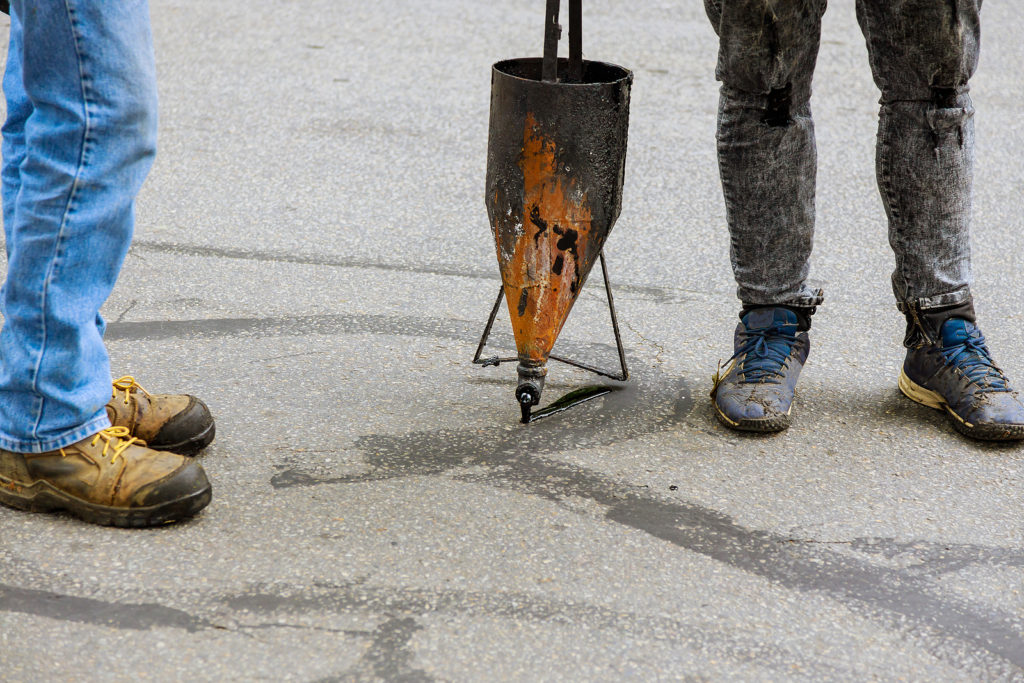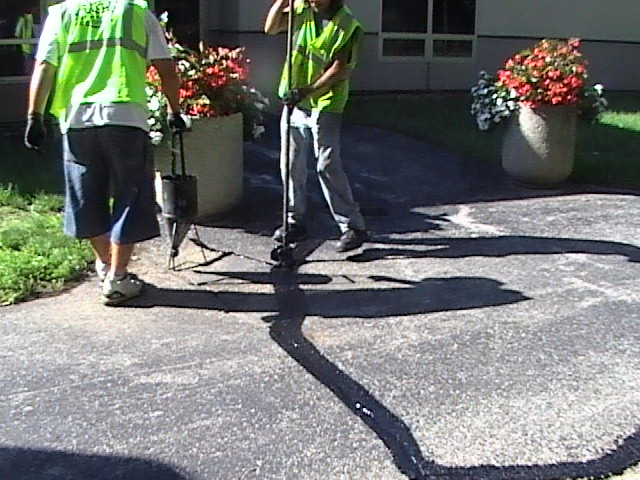Asphalt pavements are not entirely resistant to water damage unless they are properly treated with a quality sealcoat. Even then, cracks are bound to happen. But so long as you repair small cracks early on, they are much more manageable, and cheaper, to resolve. If you are looking for the best crack filler and sealer on the market, look no further than your local home improvement store. Of course, you will need to know what to look for once you have a selection of crack repair products to choose from in order to get the right one for the job.
Continue below to learn exactly that.

Crack Filling and Crack Sealing
Before you can choose the right crack sealant, you will need to know the difference between crack filling and sealing. The primary difference between the two is the type of crack they treat. Working cracks are cracks that show more than 3 millimeters of horizontal movement every year, while non-working cracks do not show this much movement, or any at all. With that bit if knowledge, you can understand how crack filling and sealing are applied.
You see, crack filling is a practice primarily used to repair non-working cracks, generally by means of filling the crevices, and for the purpose of preventing water intrusion and re-adjoining the surrounding pavement. Crack sealing is used to repair working cracks by filling the crevices with material, with the intention of preventing water permeation and fortify the surrounding pavement.
Choosing a Crack Sealer
There are various types of crack sealing products on the market, all of which are available at your local home improvement store. In order to choose the right product for your intended application, be sure to look for good absorption and interlock. The most common types of crack sealants include:
► Emulsion
► Asphalt Cement
► Rubber Asphalt
► Fiber-Modified Asphalt
► Rubberized Asphalt
► Self-Leveling Silicone
► Fiberized Asphalt
Overall, the best way to know which type of crack filler and sealant is best for the job is to ask a professional Indianapolis paving contractor who has the experience to give you trusted advice. For large-scale pavement repair projects, outsourcing the work optimizes your commercial investment. Just be sure to choose an accomplished and reputable pavement repair company that can deliver superior results.
Commercial Asphalt Paving and Repair in Indianapolis, Indiana
Call ACI Asphalt and Concrete at 317-549-1833 for commercial asphalt paving and sealcoating service in Indianapolis and its surrounding areas. Our licensed and qualified paving contractors provide a wide range of asphalt and concrete pavement repair and installation services at the most competitive prices in town, including crack filling, overlays, resurfacing, and sealcoating. Request a free estimate, today!


